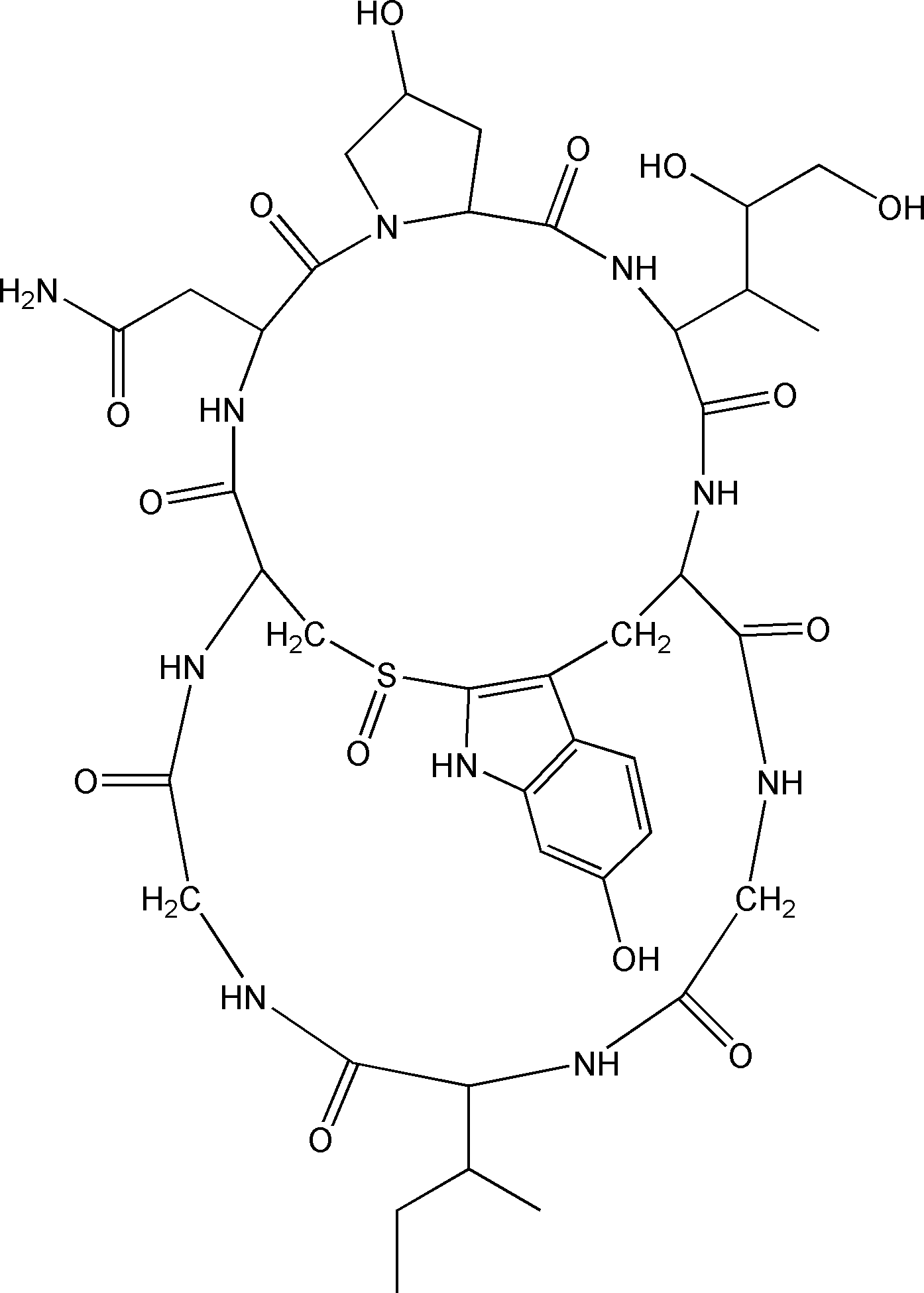Alpha amanitin is one of many toxins that can be found in mushrooms. This toxin is from the death cap muschroom Amanaita phalloides with symptoms arising 8-24 hours after ingestion (Gong, 2004). You can see in the figure 1 on the right the structure of α-amanitin. It contains an octapeptide structure with a covalent cross-bridge. Worldwide, about 90% of deaths from mushroom ingestion are due to Amanita phalloides. As you can see in the figure 2, A. phalloides looks like a regular mushroom, undistinguishable from other nonpoisonous species, which is why it is mistakenly ingested (Zevin et al. 1997).
The toxin is primarily taken up by hepatocytes in the liver, and then is distributed throughout the body (Zevin et al. 1997). The toxin binds in the secondary pore of the multisubunit RNA Polymerase II, which you can see in figure 3. Upon binding, α-amanitin inhibits the translocation of RNA Polymerase II and thereby stops transcription. However, α-amanitin is only able to inhibit translocation in two of the three conformational states that RNA Polymerase II elongation complex forms. The three confirmations that are made are called A43a, A43b, and A43c. The two sensitive conformations are A43a and A43b while A43c is the only conformational state that is resistant to α-amanitin. According to Gong et al., this indicates that the A43c conformation is a posttranslational state, which they confirmed in their paper (2004).
"Alpha-Amanitin"
Lepp 2006

